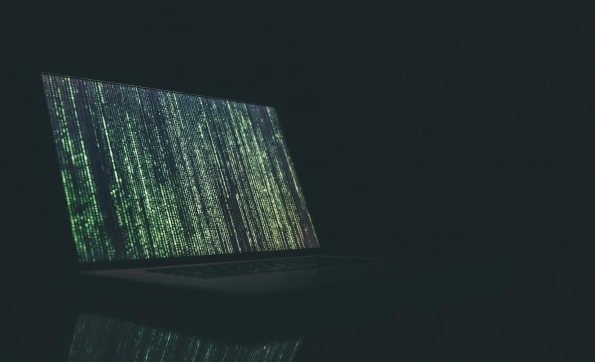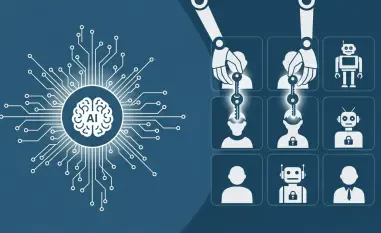In today’s rapidly evolving digital landscape, technology and data have transcended their traditional roles to become the lifeblood of organizations. Modern businesses rely heavily on advanced technologies like generative AI to drive innovation and operational efficiency. However, this increasing dependence on technology presents significant cybersecurity challenges that CEOs must address to safeguard their organizations’ value creation and future growth.
The Evolving Role of Technology and Cybersecurity
From Peripheral to Central: The Shift in Technology’s Role
Technology is no longer just a support function but has become central to business operations. It acts as the main artery that drives value and innovation in today’s competitive market. As organizations increasingly adopt advanced technologies such as artificial intelligence (AI), the importance of cybersecurity has magnified. Instead of being a mere supportive function, cybersecurity has evolved into a strategic cornerstone that ensures the continuity and security of business operations.
The modern digital environment is unforgiving; any lapse in cybersecurity can spell disaster for an organization. The surge in digitization, coupled with the integration of emergent technologies, necessitates a robust and dynamic approach to cybersecurity. This transformation underscores the critical role cybersecurity plays not only in safeguarding data but also in enabling secure innovation. Businesses cannot afford to treat cybersecurity as an afterthought; it must be integrated from the ground up.
Integration of AI and the Necessity for Enhanced Cybersecurity
The incorporation of AI into business strategies introduces new layers of complexity that heighten cyber risks. Self-learning systems, while providing substantial benefits such as predictive analytics and automated decision-making, also pose new vulnerabilities that require robust security measures. CEOs recognize these risks, leading to increased investments in cybersecurity to protect their operations and intellectual property from AI-related threats. This proactive approach is crucial for sustaining innovation and maintaining a competitive edge in the market.
As AI systems become more autonomous, they attract cybercriminals who seek to exploit these advanced technologies for malicious purposes. For instance, AI-driven systems can be manipulated to make erroneous decisions, leading to financial losses or data breaches. Consequently, enhanced cybersecurity measures are not just an option but a necessity. By investing in AI and simultaneously ramping up cybersecurity efforts, organizations can ensure that their technological advancements do not become a double-edged sword.
Economic Pressures and Technological Investments
Committing to Innovation Amid Economic Challenges
Despite economic uncertainties, a significant number of CEOs are committed to investing in AI and other digital technologies. This commitment stems from the belief that technology is a pathway to resilience and sustainable growth. Businesses that prioritize innovation, even during economic downturns, position themselves better for recovery and long-term success. The willingness of CEOs to invest in advanced technologies highlights the critical role that innovation plays in navigating economic pressures.
Economic turbulence often forces companies to tighten their belts, but cutting down on technological investment is rarely seen as a sustainable strategy. Technological advancements are viewed as essential for maintaining a competitive edge and improving operational efficiencies. Despite the financial strain, forward-thinking CEOs are emboldened by the potential return on investment offered by innovative technologies like AI. This highlights an important trend: innovation cannot be shelved until better economic conditions prevail; it must be pursued continuously for long-term prosperity.
Balancing Technological Investments with Cybersecurity
Investing in new technologies is essential, but it also requires a parallel investment in cybersecurity. The more reliant businesses become on advanced technologies, the greater their exposure to sophisticated cyber threats. To mitigate these risks, organizations must adopt a balanced investment strategy that includes both cutting-edge technologies and robust security measures. This approach ensures that technological advancements do not come at the expense of increased vulnerability.
The balance between innovation and security is delicate yet essential. Modern technological ecosystems are intricate, wherein new advancements can introduce unforeseen vulnerabilities. Thus, a comprehensive cybersecurity strategy is indispensable. Businesses must allocate significant resources to develop robust security frameworks that can protect their advanced technology stack. Neglecting cybersecurity in the race for innovation could result in severe financial, operational, and reputational damage, essentially nullifying the gains made from technological investments.
The Expanded Role of the Chief Information Security Officer (CISO)
CISOs as Strategic Risk Managers
The role of the Chief Information Security Officer (CISO) has expanded significantly in recent years. CISOs are no longer just managers of basic security tools; they are now strategic risk managers who navigate a complex landscape filled with advanced threats. Their responsibilities include identifying which threats to prioritize and determining the best ways to allocate cybersecurity resources. This strategic role is vital for maintaining a secure and resilient organization.
CISOs today are at the forefront of organizational strategy, collaborating with other C-suite executives to ensure that cybersecurity measures align well with the business’s overall objectives. They wear multiple hats—acting as advisors, strategists, and implementers. The challenge lies not just in combating current threats but also in foreseeing potential vulnerabilities in the evolving technological landscape. This multifaceted role underscores the importance of CISOs in the modern business environment, transforming them into indispensable assets for any forward-thinking organization.
Demonstrating the ROI of Cybersecurity Investments
One of the challenges for CISOs is proving the return on investment (ROI) of cybersecurity measures. Unlike other investments, the value of cybersecurity is often demonstrated through the prevention of incidents rather than immediate gains. CISOs are finding innovative ways to showcase the value of their investments by highlighting how they prevent potential regulatory penalties and operational disruptions. This approach helps justify the allocation of resources toward comprehensive security measures.
Quantifying the ROI of cybersecurity is inherently challenging but necessary to secure funding and buy-in from stakeholders. CISOs must leverage data analytics to create compelling narratives that illustrate the cost savings from averted breaches or fines. For instance, by highlighting incidents that were successfully mitigated due to proactive cybersecurity measures, CISOs can demonstrate tangible benefits. Aligning cybersecurity metrics with business outcomes makes it easier to justify continued or increased investment in security tools and practices, thereby fostering a more secure organizational environment.
Cultural Shifts and Cybersecurity Integration
Cultivating a “Secure-by-Design” Approach
A significant number of CEOs are incorporating cybersecurity at the early stages of technology investments. This “secure-by-design” approach ensures that security protocols are embedded from the outset, rather than being an afterthought. By integrating security measures early in the development process, organizations can mitigate risks more effectively and avoid costly retrofits. This proactive stance is becoming standard practice among forward-thinking companies.
Effective implementation of a secure-by-design approach involves incorporating security into the DNA of product development and operational workflows. It requires cross-functional collaboration between different departments, ensuring that everyone from developers to senior managers understands the importance of cybersecurity. By embedding security at every stage—right from the planning phases to execution—businesses can create resilient systems that are more resistant to breaches and less reliant on reactive measures. This foresight not only secures digital assets but also helps build a robust, security-aware corporate culture.
Building a Strong Cybersecurity Culture
Creating a robust cybersecurity culture is paramount for the safe integration of advanced technologies. Modern CEOs recognize that fostering a company-wide security mindset is crucial for comprehensive protection. Building this culture involves educating employees, promoting awareness, and ensuring that cybersecurity practices are deeply ingrained in the organizational fabric. A strong cyber culture not only enhances security but also empowers innovation by minimizing the fear of cyber threats.
Instilling a cybersecurity culture goes beyond employee training sessions; it requires ongoing commitment from top management to the newest hires. Regularly updated security protocols and real-time threat intel are crucial, but empowerment through education remains foundational. When employees understand their role in maintaining cybersecurity, the organization as a whole becomes more resilient. This cultural shift also fosters a sense of responsibility and vigilance, enabling quicker identification and response to potential threats. As a result, organizations with a strong cybersecurity culture are better positioned to manage risks while pursuing innovation.
Increasing Cyber Awareness Among CEOs
Technological Savviness and Cyber Threat Cognizance
Modern CEOs are more technologically savvy than their predecessors, often due to personal or second-hand experiences with cyber incidents. This increased awareness translates into a deeper understanding of the importance of cybersecurity. CEOs today are more likely to prioritize cybersecurity as a strategic concern, ensuring that their organizations are well-protected against a myriad of cyber threats. This shift in mindset is crucial for driving investment in comprehensive security measures.
Technological acumen among CEOs has translated into more informed decision-making and a greater appreciation for the complexities of cybersecurity. This heightened awareness has often been a catalyst for organizational transformation, prompting businesses to prioritize cybersecurity investments. CEOs who understand the intricacies of cyber threats are better equipped to foster a culture of security and can allocate resources more judiciously. This evolution in CEO mindset is a significant factor contributing to the increased investments and focus on developing resilient cybersecurity frameworks within organizations.
Proactive Cybersecurity Measures
In the dynamic world of today, the digital landscape is evolving rapidly, positioning technology and data as core elements in organizational success. Companies increasingly depend on sophisticated tools like generative AI to spur innovation and heighten operational efficiency. Although these advancements offer substantial benefits, they also introduce notable cybersecurity risks. Increasing technological reliance places a significant burden on CEOs, who must now prioritize strategies to protect against cyber threats. Safeguarding against these risks is not merely a matter of maintaining daily operations; it is essential for the preservation of value creation and sustained growth. As threats become more advanced and pervasive, developing robust cybersecurity measures is crucial for protecting sensitive data, proprietary information, and operational integrity. CEOs must stay vigilant and proactive, fostering a culture of security within their organizations to navigate these complexities. This comprehensive approach ensures that businesses can leverage technology’s advantages without compromising their future prospects.













